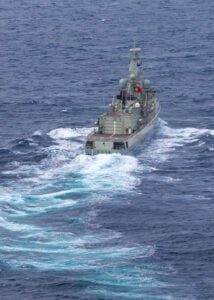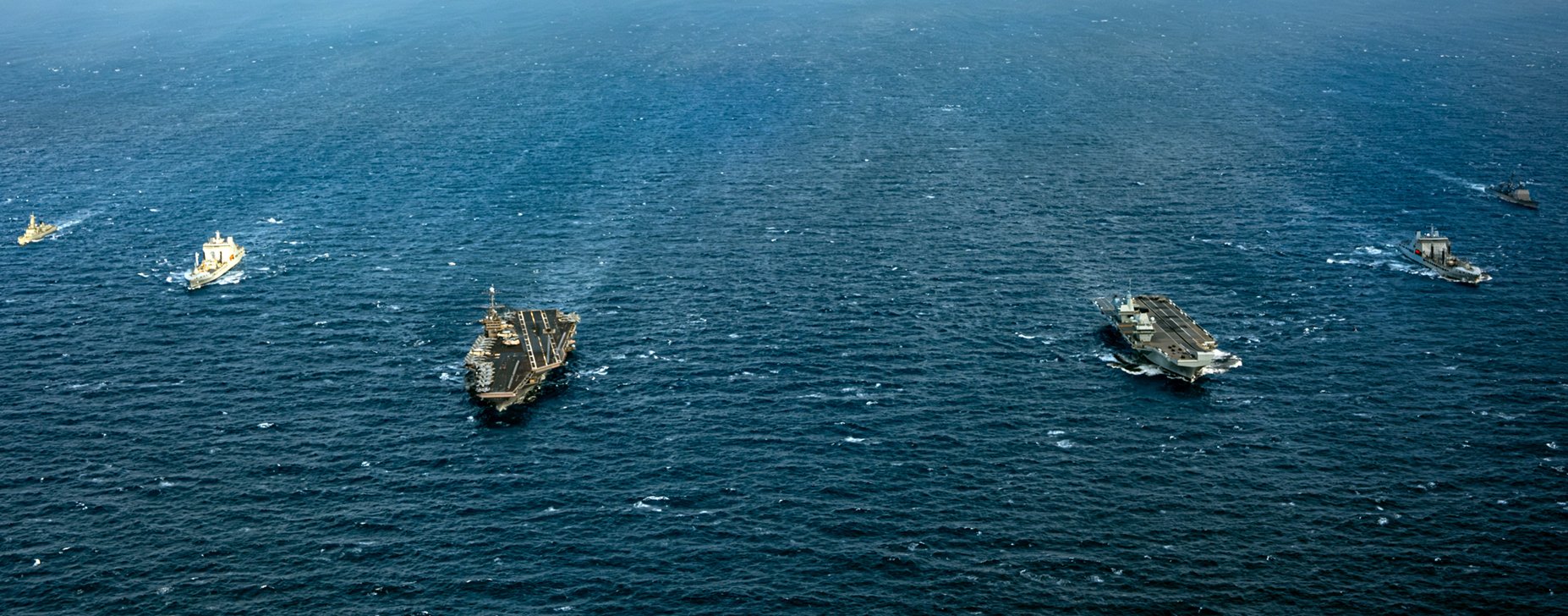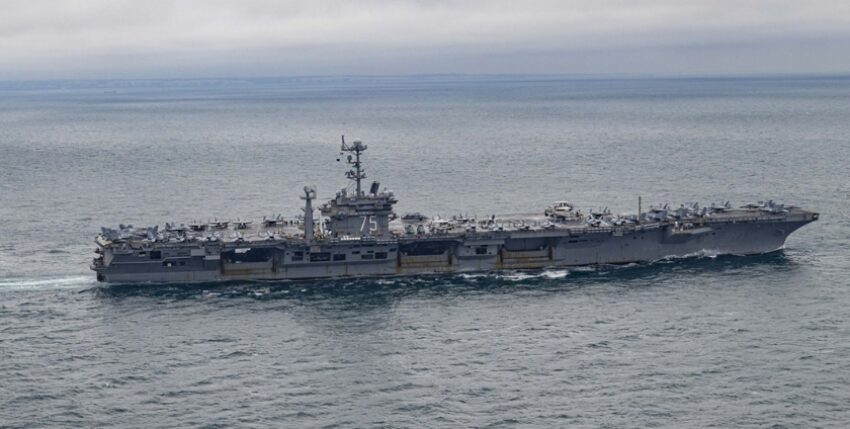Deterrence in the North Sea and Mediterranean region
Since 24 October, NATO has taken control of the US aircraft carrier "Harry S. Truman" and other units for the NEPTUNE STRIKE mission. The large-scale operation aims to establish a flexible military presence and deterrence in strategic waters and involves forces from several NATO countries.
Since 24 October, NATO has regained operational control over aircraft carriers: as the Alliance and participating nations have officially announced, several units and other forces will transfer to the command of the Naval Striking and Support Forces NATO (STRIKFORNATO) for the second time this year. NEPTUNE STRIKE to be carried out. A total of around 15,000 soldiers with 20 warships and various aircraft will take part in the programme. The operational area stretches from the North Sea to the Mediterranean, with the focus on the Baltic Sea region.

Not an exercise, but a deterrent
Contrary to what is occasionally portrayed in the media and sometimes even communicated by NATO itself, NEPTUNE STRIKE is not an exercise, but an "enhanced Vigilance Activity" (eVA). The difference is that exercises are usually planned well in advance and follow a set procedure. An eVA, on the other hand, is prepared with little lead time. The focus is on the integration and interaction of the forces involved for the purpose of general deterrence. Just as NEPTUNE STRIKE 22-1 had no connection with the deployment of Russian troops along the Ukrainian borders at the time, NEPTUNE STRIKE 24-2 has no connection with the current situation in the Middle East.
NEPTUNE STRIKE is part of the NEPTUNE series, which emerged from the NEPTUNE project initiated by STRIKFORNATO and the US 6th Fleet in 2020 and began in spring 2022 with NEPTUNE STRIKE 22-1. Since then, STRIKFORNATO has regularly trialled the integration of high-value maritime capabilities such as aircraft carriers into allied structures, albeit always at short notice. This takes place via a "transfer of authority" (TOA), i.e. the temporary transfer of - in this case - operational control (OPCON) over naval units or individual ships from a nation to NATO. The advantage of this process is that multinational leadership simplifies and thus improves coordination by allowing information and decisions to be passed on more quickly. STRIKFORNATO benefits in particular from a network of liaison officers who are sent to all participating NATO headquarters specifically for NEPTUNE STRIKE.
Return of the US Navy
A US aircraft carrier battle group has been taking part in NEPTUNE STRIKE 24-2 again since summer 2023. Following the Hamas massacre of Israeli civilians on 7 October 2023, the United States withdrew its forces from eVA NEPTUNE STRIKE 23-3, which was planned for a short time later. This and eVA NEPTUNE STRIKE 24-1 were therefore carried out for the first time using only European aircraft carriers. Despite the unfortunate circumstances, this did not detract from the further development of the NEPTUNE series: after Italy and Spain had already regularly participated with their aircraft carriers in previous programmes, the British "HMS Queen Elizabeth" celebrated its premiere in NEPTUNE STRIKE 23-3 and the French "Charles de Gaulle" in NEPTUNE STRIKE 24-1. This means that all NATO members with aircraft carriers are involved in the NEPTUNE project.
NEPTUNE STRIKE 24-2 not only marks the return of the Americans, but also a reunion with the "Harry S. Truman" (CVN 75). In spring 2022, she made history to a certain extent, as NEPTUNE STRIKE 22-1 was the first aircraft carrier to be placed under NATO operational control since the end of the Cold War. This was followed by her participation in the eVA NEPTUNE SHIELD 22 the following May, before she routinely returned to her home port of Norfolk on the US East Coast in September.
While the "Harry S. Truman" operated in the Adriatic Sea with NEPTUNE STRIKE 22-1, it is now being deployed in the North Sea with NEPTUNE STRIKE 24-2. The battle group reached the sea area just a few days ago. It was accompanied by the Portuguese frigate "Don Francisco de Almeida", which is currently part of STANDING NATO MARITIME GROUP 1 (SNMG 1).

Multidimensional operations
In the coming weeks, NEPTUNE STRIKE 24-2 will be presenting both familiar and new topics. The former includes procedures for "air-land integration" (ALI). This involves carrier-based combat aircraft being briefed by observers on the ground. This usually takes place at allied military training areas. What may sound simple is complex: first of all, the jets have to cover long distances. This requires the support of large tanker aircraft, which have to take off from land and meet up with the fighter jets somewhere. Once on the ground, they then have to quickly establish contact with the briefing personnel and, if necessary, other aircraft in order to be able to act with precision. Coordinating such multidimensional operations, especially among several nations and between different branches of the armed forces, is complex and therefore requires frequent training. However, the fact that NATO is capable of doing this shows its flexibility and efficiency.
All of this is being orchestrated from the US lead ship "Mount Whitney". The majority of STRIKFORNATO's staff moved from their headquarters in Oeiras, Portugal, to Gaeta, Italy, the home port of the "Mount Whitney", a few days earlier. STRIKFORNATO had already demonstrated its ability to command large fleets from different locations with comparatively few personnel during previous NEPTUNE STRIKE exercises and exercises such as BALTOPS. For example, the Italian aircraft carrier "Garibaldi" acted as STRIKFORNATO's flagship during NEPTUNE STRIKE 23-2.

2024: Largest exercise in the NEPTUNE series
In addition to carrier operations, the NEPTUNE STRIKE 24-2 exercise catalogue will include amphibious landings, mine countermeasures operations and combat against drones. The theatre of operations will revolve around Central Europe: in the North Sea, the "Harry S. Truman" will encounter the British carrier group around the "HMS Prince of Wales". In the Mediterranean, the amphibious battle group is centred around the US amphibious assault ship "Wasp" (LHD-1). It is supported by the Italian carrier "Cavour" and the Turkish carrier "Anadolu". The latter was already involved in NEPTUNE STRIKE 24-1.
All carriers are escorted by escort ships. The amphibious ships have also embarked naval infantry plus equipment and gear. Around 15,000 soldiers are expected to have taken part in NEPTUNE STRIKE 24-2. After NEPTUNE SHIELD 22, this will be the largest exercise in the NEPTUNE series in terms of the number of forces involved.
Text: KKpt Helge Adrians , Security Policy Research Group / Editor Uwe Mergener
Images: US Navy / DIVIDS










